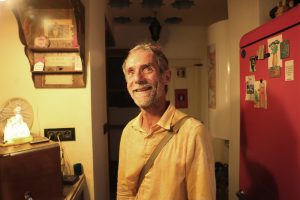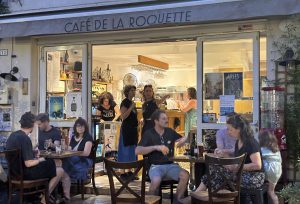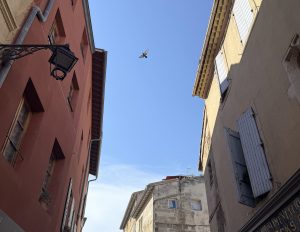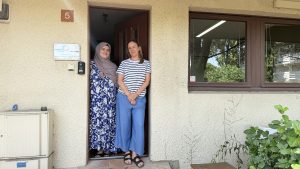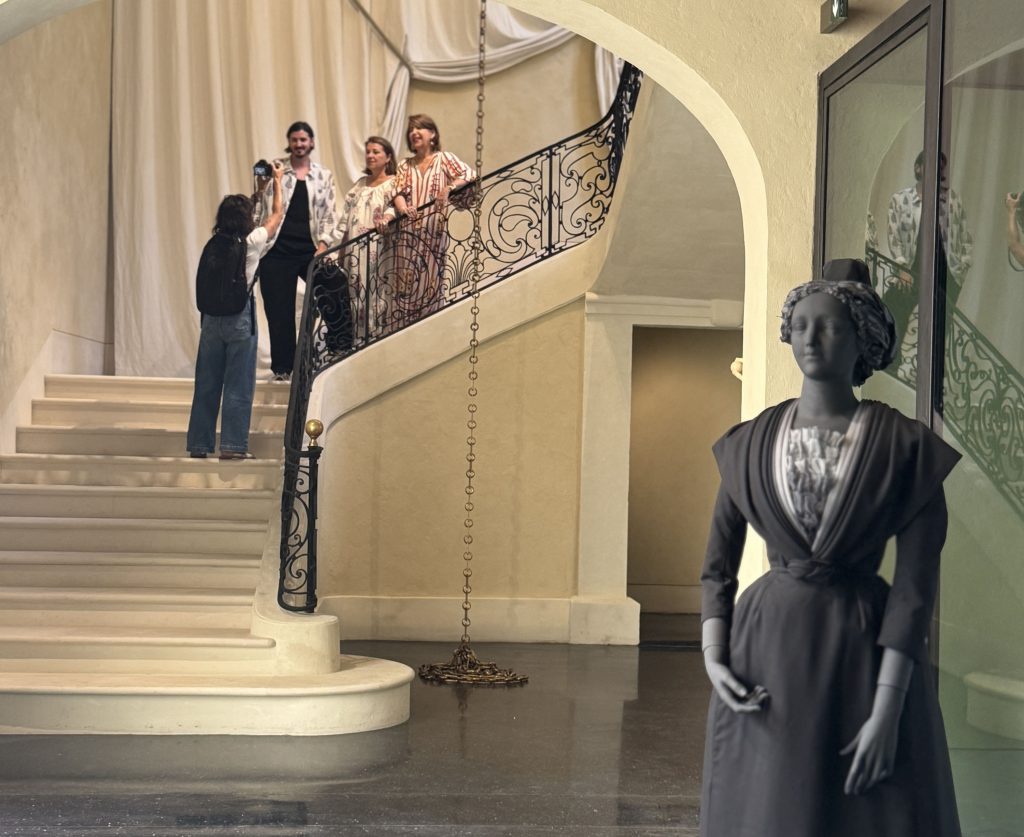
Museum Director Clément Trouche’s favorite black Arlesian dress stands in the foreground as he joins Françoise and Agnès Costa for a photo on the staircase behind.
Text and Photos by Zoe Dixon
It began with an obsession. Two families, the Costas and the Pascals, had been collecting Arlesian and Provençal costumes for decades. Their collections of lace and velvet told stories of another era, when women’s elegant outfits whispered status and secret histories.
Now, that obsession has found its sanctuary: a 14th-century mansion reborn as the Musée de la Mode et du Costume in Arles. Opened on July 6, the museum marks a new milestone in the preservation and celebration of Arlesian culture through costumes. Here, garments don’t just hang on mannequins but come to life. They don’t just preserve history, but perform it as well.
Born from the unlikely convergence of these two family collections – and a refusal to let tradition fade – this museum is not simply a time capsule but a resurrection of the past.
“Collecting is in our DNA,” said Agnès Costa, the president of Fragonard Parfumeur and one of the driving forces behind the new museum. “We grew up surrounded by perfume bottles, antiques and costumes. It started as a passion of our father and of mother – maybe even a madness – but the idea of sharing it with the public gives you a good reason to collect even more.”
The Musée de la Mode et du Costume, housed in the restored Hôtel de Bussy, is both a cultural institution and a love letter to traditional Provençal fashion.
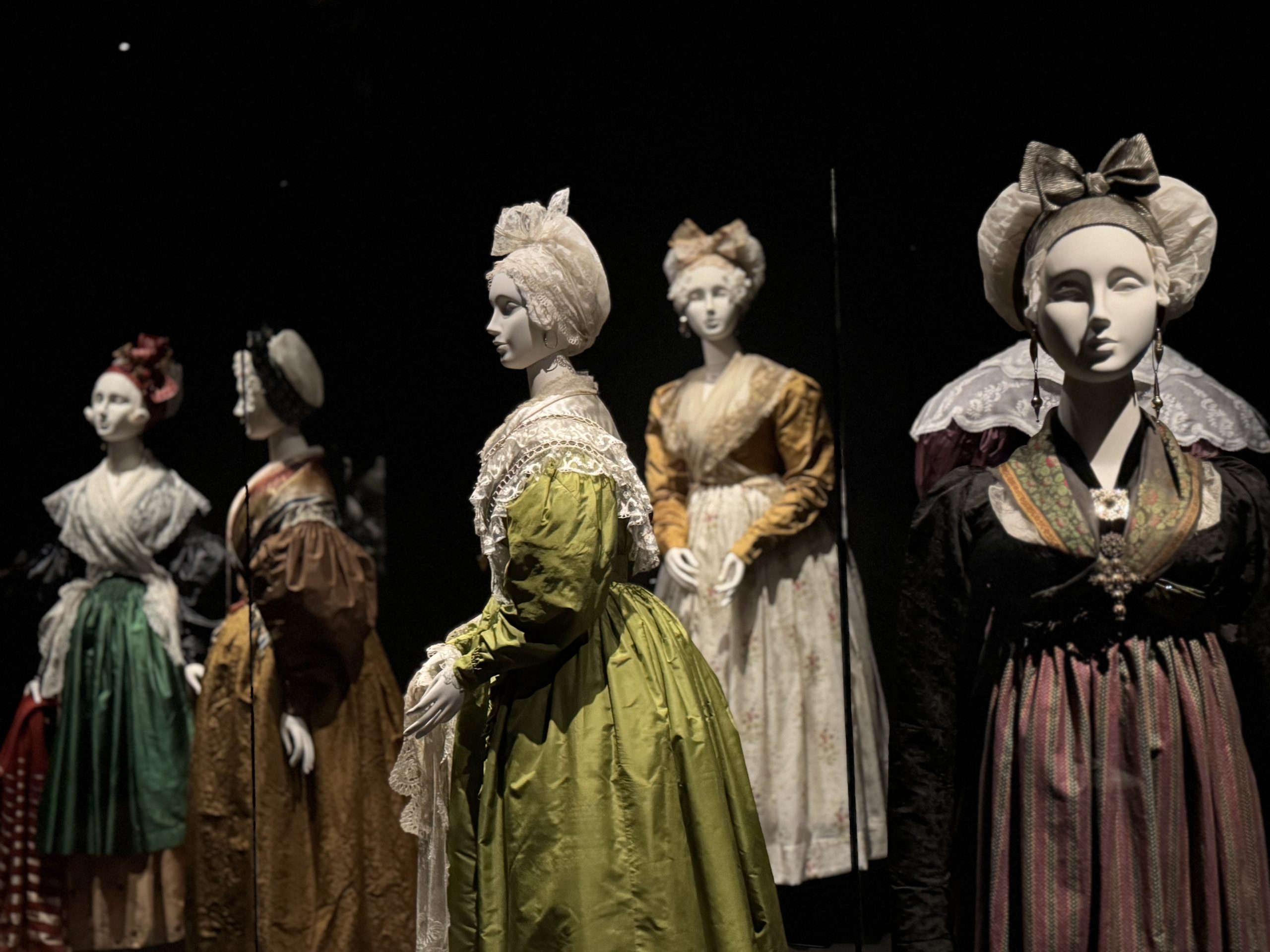
Two families, one collection
The museum is more than a cultural landmark, but a commitment and passion for heritage. That passion begins with Anne, Agnès and Françoise Costa, Fragonard Parfumeur’s fourth-generation leaders and the daughters of Hélène Costa — from whom they inherited not only an impressive Provençal costume collection but also her passion for collecting.
The sisters made the decision to acquire the Arlesian costume collection amassed by historian Magali Pascal and her daughter, Odile Pascal, before the former woman’s death in 2020 to give the pieces a safe harbor.
“This museum was born from a meeting between two extraordinary collections and two families who didn’t want these pieces scattered or forgotten,” claimed Charlotte Urbain, Fragonard’s director of culture and communications.
The merged collections offer new insight on French Mediterranean clothing styles from the 18th to 20th centuries.
A home at the Hôtel Bouchaud de Bussy
The Costa sisters had thought about sharing their costume collection with the public for years, but the availability of the Hôtel Bouchaud de Bussy in 2019 is what sealed the project’s fate, giving the garments a permanent home. Dating back to the 14th century, the building has served many roles over time, from a noble family’s mansion to a maternity clinic and later a small hotel.
“When we started renovating, the first step was stripping away everything, decades of layers from its time as a clinic and hotel,” explained Clément Trouche, an Arlesian costume historian and the museum’s director. “What we uncovered was the original architecture, room by room. The goal was to return the building to its original essence, to bring it back to life as it once was.”
Fragonard partnered with Karl Fournier and Olivier Marty from Studio KO and heritage architect Nathalie d’Artigues, head of NDA Agence, to design the museum. Their most challenging accomplishment was emphasizing the tension between the contemporary and the classic.
“We’ve spent five years transforming the Hôtel de Bussy into this museum,” Françoise Costa explained. “It was a long journey, but we believed in the vision.”
The 1,000-square-meter site underwent an extensive heritage restoration, revealing original features while integrating new design elements: glossy floors inspired by Marseille earthenware, walls echoing the hues of Rhône boat canvases and a gilded brass door reminiscent of a Provençal jewel.
Spread over three levels, with a central courtyard and an ancient stable, the building has been transformed into a bespoke setting for the artifacts. Special attention was paid to the fragility of the textile collection, with custom display solutions and conservation technologies ensuring their protection.
“As you enter the hall, the light gradually fades, and you begin to lose your sense of time and place,” Trouche noted. It’s designed to immerse you completely: just you, the clothes and the history.”
Inside the museum, dim lighting and dark walls create a sense of calm, drawing all attention to the delicate details of every ensemble. Each costume is displayed in a glowing glass case along a path, arranged in chronological order. Studio KO’s design makes the experience feel intimate and emotional, connecting visitors not just to the fashion, but to the people and history behind it.
“This museum isn’t frozen in time,” Trouche added. “It’s alive. That’s why it had to be built.”
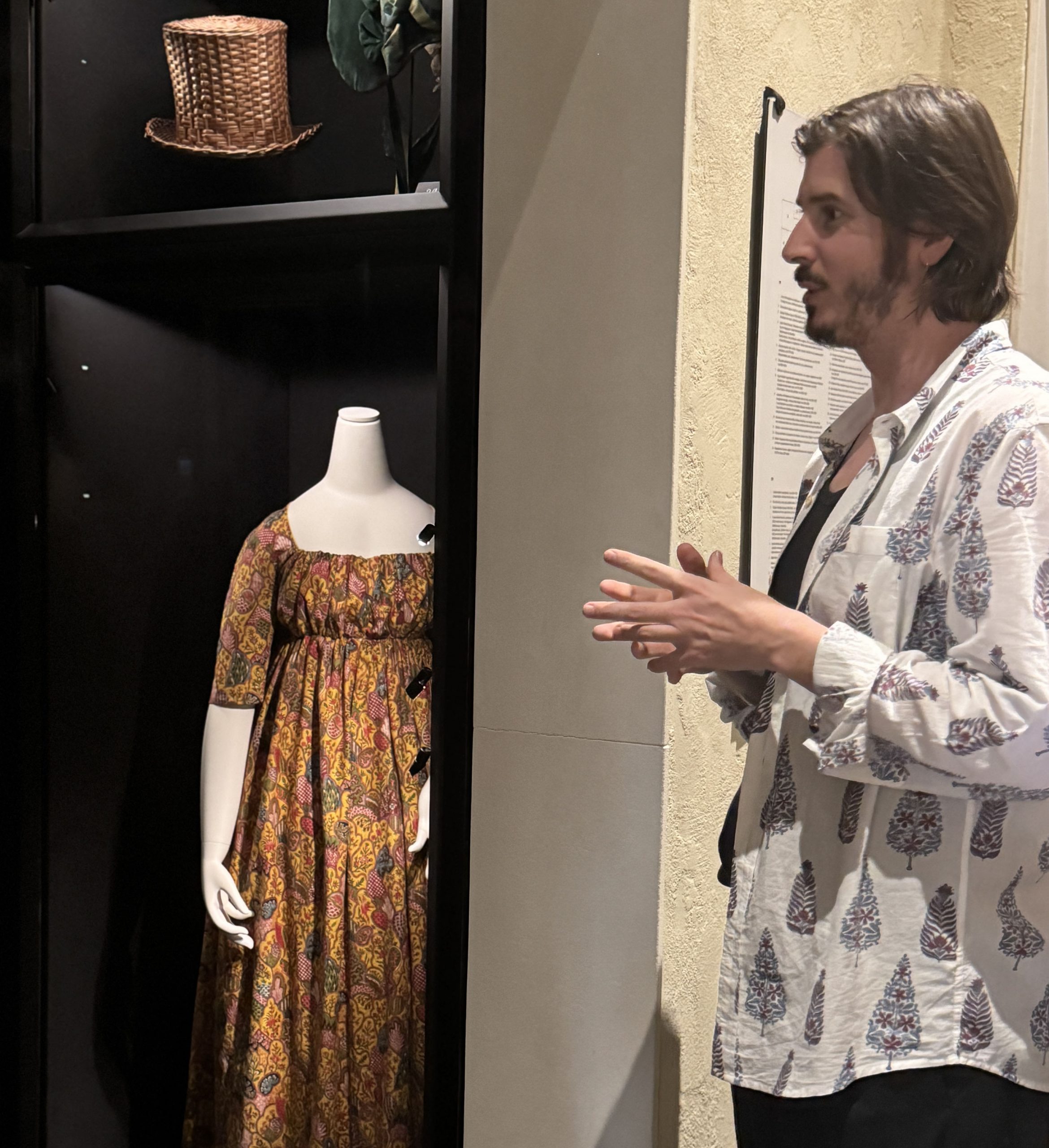
The costumes themselves feel anything but static. Though some are centuries old, they radiate movement and personality, with stories to be told. The debut exhibition, Collections-Collection, comprises 40 silhouettes that speak histories: from local to Oriental fabrics, and robes à la française to the Arlesian fichus, a triangle shawl. This display presents clothing worn across all social classes, from rural workers to aristocrats, showing the nuance of French Mediterranean dress.
“In Arles, fashion was more than decoration. It was a language,” Trouche stated. “Women expressed identity, class and resistance through what they wore. Even the farmer girl, if she was well put together, could enter a higher class here.”
By placing garments from both collections side by side, the exhibition creates new dialogues between objects, illuminating their original context, purpose and meaning.
“Every dress here tells a story,” added Trouche. “You have to imagine the woman who wore it, how she lived, what she wanted to say.”
The exhibit shows mostly women’s clothing since men’s costumes were often discarded over time and thus harder to acquire, although the museum is currently in search of them.
“We have an abundance of women’s garments, since presenting themselves was part of their role in society,” Trouche explained. “To truly understand these pieces, you have to step into the lives of the people who wore them, across different centuries.”
For example, imagine the dress of the Arlesian bride (circa 1830-1835), which consists of a small cape-like garment called the pèlerine and a matting headdress, tied together with a ceremonial ribbon and adorned with Caen lace. Outfits like this represented the height of elegance, especially during promenades and gatherings, where fashion was a fiercely competitive sport among the young women of Arles. At the time, the press even coined a term for these unofficial style showdowns: la mode arlésienne, or Arlesian fashion.
With more than 10,000 pieces across the Costa and Pascal collections, the museum is designed to rotate its displays regularly.
“Textiles are really fragile, so we can’t have an exhibition that stays forever,” Trouche explained. “There are strict preservation rules.”
The inaugural show will run for six months, featuring many garments that haven’t been displayed in over a decade. After that, the museum plans to collaborate with other institutions in Arles to exchange pieces.
Living portraits of Arles
The museum deepens its storytelling through a video installation by photographer and filmmaker Charles Fréger, created specifically for the space. On nine screens silhouettes of women are seen preparing themselves in traditional Arlesian dress.
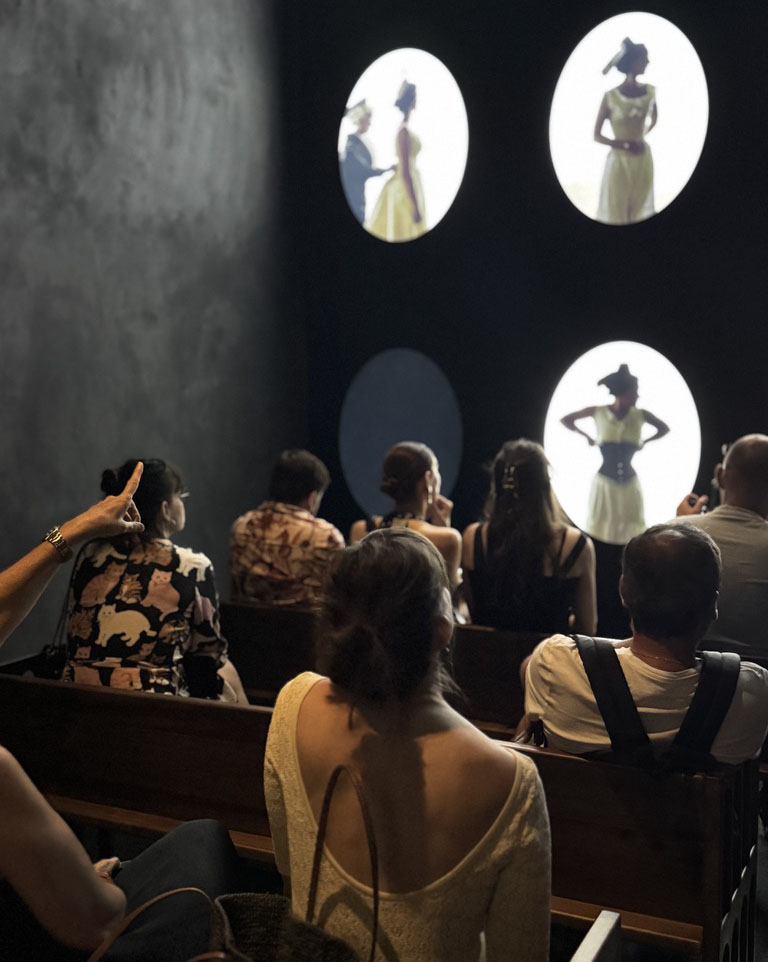
Each woman performs the intimate ritual of getting dressed: tying ribbons, arranging layers and combing back her hair into an elaborate traditional coiffure. No two gestures are the same. Some women take their time, carefully layering ornate pieces; others dress quickly, simply. One prepares for her wedding. Another is revealed to be a mother. A third is a teenager.
The women featured all have strong ties to Arlesian heritage; some have held the title of Queen of Arles, others are dedicated to preserving local traditions. Among them are Odile Pascal and her daughter Hortense, continuing the legacy of the Pascal collection.
Elsewhere in the museum, Antoine Raspal’s 18th-century paintings further animate the spirit of Provençal fashion. His portraits of Arlesian women are always posed in a similar stance, resembling mannequins, and thus capturing the fashion trends of Arles over two centuries.
A new chapter in Arles’ cultural legacy
With the opening of the Musée de la Mode et du Costume, Arles further solidifies its role as a cultural capital of the region. The city now offers a new lens through which to explore its past.
“We love when people discover Fragonard not just through fragrance, but through culture — museums like this let us share who we are,” said Agnès Costa.
The museum adds yet another reason for travelers to visit this historic destination, especially those drawn to fashion.
“This is the first fashion museum in Arles,” said Charlotte Urbain, director of culture and communication for Fragonard Parfumeur. “It’s not just for tourists — it belongs to the people of Arles.”
Monica Ronco served as the interpreter for this story.
Visitor Information:
Address: 16 rue de la Calade, 13200 Arles
Hours: Open daily, 10 a.m. to 6:30 p.m.
Tickets: General admission from €8 to €10, free for those under the age of 18
Website: musee-mode-costume.fragonard.com
